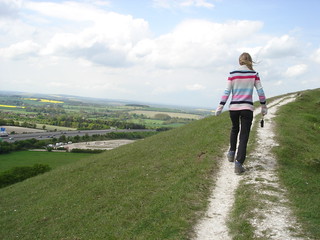Well, I’m nothing if not consistent. It’s been almost a year since I last posted here. I do think it’s worth mentioning that I write a weekly blog post to communicate all the neat learning we do in the classroom each week with the families of my students. Also, since my last post, life has been about COVID (ugh), deciding to build a house, younger son graduating and starting university, older son veering off into a new career path and more…suffice it to say that life continues to keep me busy. But, as usual, I digress and start my blog post off with inner ramblings to explain why it’s been so long since I’ve posted rather than get to the actual reason why I’m posting.
The truth is, I decided to use outer accountability to force myself to write here. Like many school districts, Comox Valley Schools asks teachers to create a professional learning plan at the start of each school year. This past September, I decided to focus my professional learning on two things: finish reading my last Richard Wagamese book (I’ll explain what that means), read one book about anti-black racism and write a blog post in connection to one or both of those books.
Last spring, I walked into my locally owned bookstore and asked for recommendations on the topic of racism. George Floyd’s death, Black Lives Matter protests and other events led me to want to learn more about racism, and, in particular, anti-black racism. My request at the local book store was met with several suggestions (there was actually a prominent display of books on this very topic) and I chose White Fragility by Robin DiAngelo. As soon as I started reading, I was immediately reminded how challenging it is for me to engage with non-fiction text (I think all the reading I did during MEd year actually damaged something in my brain…so many research articles…).
By mid-summer, I had learned some valuable perspective from reading White Fragility, including some helpful definitions to help shape my understanding. After finishing the book, I wanted to learn and do more. I started looking for black, Indigenous and people of color (BIPOC) to follow on social media. I was already following and learning from many Indigenous people online, partly because of my Métis and Cree family, partly because of my Masters research on Indigenous epistemologies, and partly because of where I grew up (my mom moved us to Lillooet, a small town located on St’at’imc Territory, when I was nine). I wanted to read more and was happy to see that How to Be an Antiracist by Ibram X. Kendi was back in stock at my local bookstore (shout out to Laughing Oyster Books in Courtenay – love this place!) so I purchased that and decided it would be next on my list of anti-racism reading.
Shortly after purchasing How to Be an Antiracist, school started and by October, the amount of time I was able to spend reading reduced dramatically. I also didn’t seem to have the mental reserves to adequately focus on non-fiction when the reality of teaching in COVID times set in. In November, I had to take a hard look at my personal and professional life and made some major changes in the name of self-care and overall wellness. I took a break from professional learning to thoroughly enjoy Christmas (even if it was a COVID Christmas) and winter break with my family. Last month, when the holidays were over and normal, everyday life settled back in, I decided to switch to one of my other professional goals and read the last book on my Richard Wagamese to-read list. A previous blog post from November 2018 here explains the reason behind the Wagamese books. Embers: One Ojibway’s Meditations was the last book published while Richard Wagamese was still alive. Two books (one unfinished) have been published since his death but, as they weren’t published when I first took on the task of reading all of Wagamese works in the order they were published, to me, Embers was the last book on my list.
I’m happy to say that I finished reading Embers on the weekend! It took me almost four years, but I’m really happy to say that I’ve now read all works written by Richard Wagamese that were published while he was still alive. I’m not ready to read the books published after his passing. I decided this after I finished reading Embers. After finishing that last book, I’m once again saddened by his passing. Such a brilliant man and an incredible storyteller. His work has created a profound change in how I think and who I am. His stories stay with me. I carry them. I highly recommend his works to anyone (there’s everything there – he has published collections of essays, poetry and his amazing fictional pieces). I think one of my next steps now is to call Vicki and talk to her soon. Time to check in, report on my accomplishment and see what the recommended next steps are.
So, tonight, bored with the Groundhog-Day-type of repetitive routine that is daily life these days, I decided to update my blog links (an annual task) and fulfill the last of my professional development plans by writing my blog post. It didn’t exactly turn out the way I’d thought it would but I’m glad to have continued my professional development story and get some words out of my head and onto a page (even if it is a webpage, not quite as satisfying as writing on actual paper but close).
Thanks for reading and take good care.



